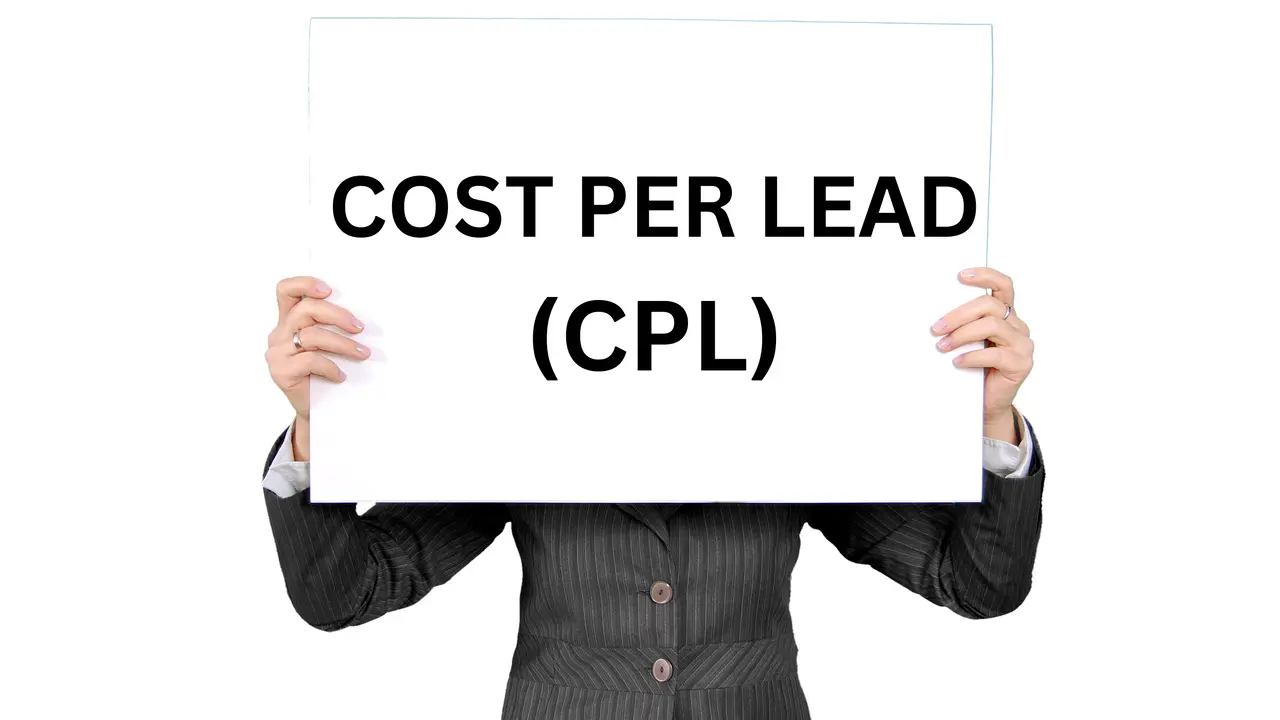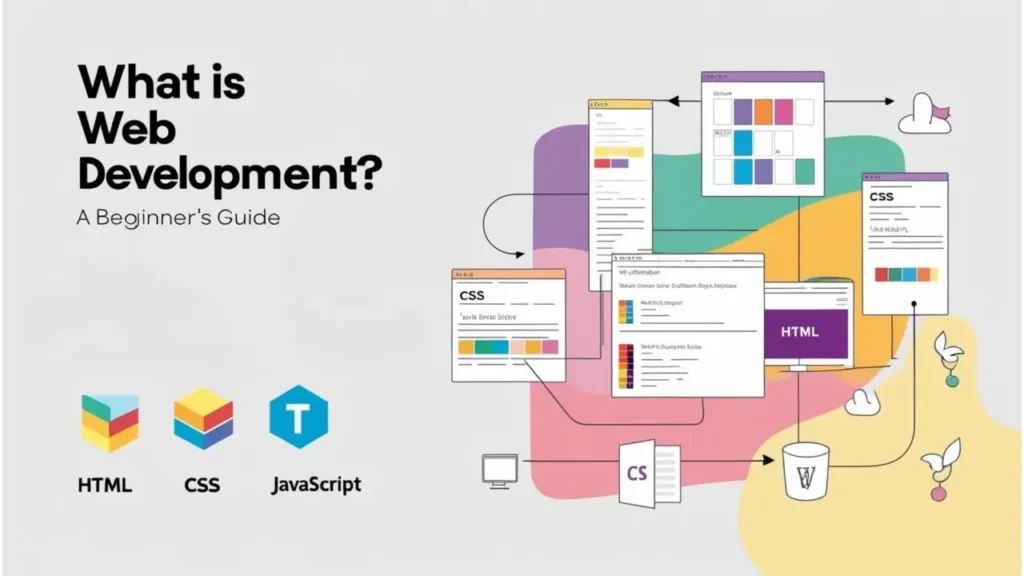Are you spending more than necessary to acquire each lead in your performance marketing campaigns? If so, you’re not alone. Performance marketing, a field laser-focused on optimizing return on investment, continues to challenge advertisers to improve strategies and reduce costs. This article delves into practical steps to lower your Cost Per Lead (CPL), including refining audience segmentation to target the most promising prospects, optimizing ad creatives for better engagement, and enhancing landing page performance to boost conversions. Readers will learn to evaluate current CPL metrics accurately, implement intelligent bidding strategies, and leverage cost-effective marketing channels. By tackling these key areas, you’ll not only see a decrease in CPL but, most critically, an improvement in your campaign’s overall efficiency and data-driven results.
Key Takeaways
- Understanding Cost Per Lead is crucial for marketing resource allocation
- A lower CPL indicates a marketing strategy aligned with audience preferences
- Content marketing can draw in leads without the costs of paid advertising
- Real-time analytics enable swift responses to optimize CPL
- Scaling successful campaign strategies can consistently improve conversion rates
Understanding the Fundamentals of Cost Per Lead (CPL)

In the complex landscape of performance marketing, understanding Cost Per Lead (CPL) is foundational. It is the metric that details the expense incurred by a brand when generating a potential customer through lead generation activities. Marketing strategies often pivot on CPL as a measure of effectiveness, influencing the allocation of resources towards landing page optimization and campaign adjustment. Factors like market dynamics, audience targeting, and ad creative quality play a significant role in affecting CPL rates. The upcoming content will delve into defining CPL in marketing, its strategic role, and the common variables that can impact costs.
Defining Cost Per Lead in Performance Marketing
Within the framework of performance marketing, “cost per lead” serves as a critical gauge for measuring the monetary investment required to generate a lead, integrating seamlessly into a marketing strategy. By meticulously tracking CPL, firms can gain insightful data on how well their campaigns are resonating with the target audience. An effective CPL strategy often entails an omnichannel approach which ensures a cohesive user experience across various platforms, potentially lowering the cost per action by engaging customers through their preferred channels. To grasp CPL’s significance, consider it the financial echo of a brand’s marketing reach: a lower CPL suggests a strategy well-tuned to the needs and behaviors of the target audience.
- Tracking CPL provides vital data on campaign effectiveness.
- An omnichannel approach can contribute to a cohesive user experience and potentially reduce costs.
- A well-tuned marketing strategy is reflected in a lower CPL, indicating alignment with the target audience’s preferences.
The Role of CPL in Marketing Strategies
The pivotal role of CPL in marketing strategies arises from its direct influence on budget allocation and its impact on overall marketing efficiency. Analyzing CPL through robust analytics allows brands to align marketing spend with customer lifetime value, ensuring sustainable growth. By prioritizing channels that contribute to both brand awareness and lead generation, companies can achieve a more cost-effective “cost per mille” (CPM) and optimize their investment. It is a nuanced balance of employing data insights to guide budgeting decisions and gauging the long-term value of acquired leads, pivotal for a brand’s enduring success in the digital marketplace.
Common Factors Affecting CPL Rates
Several factors exert influence on Cost Per Lead rates, shaping the terrain of performance marketing. Haunting many campaigns is the ghost of market saturation, where the increased competition drives up advertising costs, especially in popular channels like email marketing and internet advertising campaigns. The art of crafting a successful advertising campaign in such a crowded space necessitates creativity and precise audience targeting. In the realm of influencer marketing, the choice of partnership can either dilute or amplify lead generation effectiveness, while content marketing requires engaging material that resonates with the audience to encourage conversion without escalating costs:
- Email marketing strategies need to stand out amidst a saturated market to maintain a low CPL.
- Well-targeted internet advertising campaigns are essential for capturing high-quality leads.
- In influencer marketing, selecting the right individuals to represent the brand can significantly affect lead costs.
- Investing in high-quality content marketing can result in higher engagement and better conversion rates without proportionate cost increases.
Evaluating Your Current CPL Metrics

In the pursuit of cost-efficiency within performance marketing, brands must rigorously evaluate their Cost Per Lead metrics. It involves analyzing lead generation data to identify expensive channels and underperforming campaigns. By benchmarking these findings against industry standards, businesses can pinpoint areas ripe for optimization. This evaluation becomes the springboard for enhancing strategies across native advertising, search engine optimization, online advertising, and mobile app engagement, with the overarching goal of refining the cost-effectiveness of their marketing endeavors.
Analyzing Lead Generation Data
To substantially lower the Cost Per Lead, companies must scrutinize their lead generation data with precision. This precise analysis involves looking beyond sales numbers to understand the interplay between investment returns and media buying strategies across digital marketing channels. For instance, by using analytics tools to track user behavior from search engine queries to website interactions, businesses can identify the most cost-effective methods for converting prospects into leads. Such data-driven insights allow for refined targeting, smarter investment in high-performing channels, and ultimately a more optimized media buying approach aligning with the business’s financial objectives.
Identifying High-Cost Channels and Campaigns
In performance marketing, pinpointing high-cost channels and campaigns is crucial to streamlining a brand’s Cost Per Lead. An in-depth analysis reveals how a poorly performing loyalty program or an affiliate marketing strategy might drain resources without delivering the anticipated number of leads. The goal is to direct customer behavior towards cost-effective platforms, thus ensuring that every marketing dollar enhances customer acquisition. Guided by data, businesses can reallocate budgets away from these high-cost channels, focusing instead on avenues with a proven record of generating leads more efficiently.
Benchmarking Against Industry Standards
Benchmarking against industry standards equips businesses with crucial insights into how their marketing channel performance stacks up against peers. In the realm of performance marketing, this comparative information lends itself to strategies for refining search engine marketing and deploying machine learning algorithms that streamline management and targeting processes. Organizations that stay informed about prevailing CPL norms within their industry can effectively calibrate budgets and expectations, making their marketing strategies not only competitive but also more efficient in the long run.
Refining Target Audience Segmentation

An integral strategy for reducing Cost Per Lead (CPL) hinges on refining target audience segmentation. Key practices such as developing detailed buyer personas, harnessing customer insights for precise targeting, and eliminating unprofitable audience segments contribute to a more effective allocation of marketing resources. By tailoring content to appear on relevant search engine results pages, crafting targeted newsletters, and automating marketing outreach with precision, companies can fine-tune their formula for customer acquisition and engagement, ultimately leading to lowered costs and improved campaign performance.
Developing Detailed Buyer Personas
Developing detailed buyer personas is a critical step in reducing CPL in performance marketing, requiring meticulous attention to customer data. By harnessing the analytical power of sophisticated marketing dashboards, teams can identify the characteristics of their most qualified leads, shaping their marketing campaigns accordingly. This strategic focus ensures that resources are concentrated on the highest potential customers, thereby optimizing CPL marketing efforts across various channels.
Utilizing Customer Insights for Precise Targeting
In the quest for cost-efficient marketing campaigns, advertisers harness customer insights to target ads more effectively, resulting in higher-quality leads. Insightful analysis of customer behavior and preferences allows brands to craft personalized messages that resonate deeply, thus engaging the potential customer and fostering a transition from a generic audience member to a qualified lead. This approach not only refines the targeting process but also enhances the potential for conversions, ensuring that the marketing budgets yield a more fruitful return on investment.
Eliminating Unprofitable Audience Segments
One of the most decisive steps an agency can take to improve customer acquisition and optimize marketing spend is to identify and eliminate unprofitable audience segments. Through comprehensive data analysis, these agencies can discern which segments do not significantly contribute to the desired Cost Per Lead (CPL) metrics, leading to higher Cost Per Impression (CPI) or Cost Per Engagement (CPE). By reallocating resources away from these underperforming areas, companies can concentrate their efforts on more fruitful segments, thereby bolstering lead quality and enhancing the overall efficiency of their marketing strategies.
Optimizing Ad Creative and Messaging

In the sphere of performance marketing, the art of ad creative and messaging cannot be understated for media buyers and merchants striving for conversion rate optimization. Quickening the pulse of online marketing, especially in social media marketing, involves crafting engaging ad copy, comprehensive A/B testing of visual elements and headlines, and aligning messaging with the specific needs of the target audience. These elements embody the essential tactics for advertisers to enhance engagement, ensuring that each campaign not only resonates with potential customers but also contributes to a reduced Cost Per Lead.
Crafting Engaging Ad Copy
An essential aspect of performance marketing is the creation of ad copy that not only engages the consumer but also maximizes efficiency in leading them to the point of sale. The strategic use of data from tools such as Google Analytics can ensure that the messaging resonates with the target audience, thus reducing the dollars spent per lead. Captivating ad copy should provide a clear value proposition and call-to-action, enabling companies to convert interest into measurable outcomes effectively.
A/B Testing Visual Elements and Headlines
In the realm of performance marketing, A/B testing serves as a pivotal tool for refining ad creatives, including visual elements and headlines. By simultaneously deploying variations of an ad and monitoring audience reactions, marketers can discern which version aligns best with the preferences of their target market. This data-driven approach ensures that payment resources are allocated to the most effective creatives, directly impacting social media engagement, user experience, and conversion rates while adhering to the algorithms that govern ad visibility.
Aligning Messaging With Audience Needs
Reducing customer acquisition cost hinges on the alignment of ad messaging with the specific needs and desires of the target audience. Leveraging predictive analytics affords marketers a clearer understanding of customer behaviors and trends, enabling more targeted messaging on web pages and in email communications. By learning from collected data, firms can craft messages that speak directly to prospective customers, gathering email addresses and nurturing leads more efficiently.
- Deploy predictive analytics to better comprehend customer behaviors and trends.
- Utilize insights to tailor messages on web pages for a personalized approach.
- Engage prospects effectively to collect email addresses and nurture leads with relevance and precision.
Enhancing Landing Page Performance

Enhancing landing page performance is a critical aspect of reducing Cost Per Lead (CPL) within performance marketing. Incorporating automation can streamline user experience for better conversions, offering simplicity and directness in the marketing mix. Implementing clear, compelling calls to action directly influences the money spent per mille, urging swift customer action. Additionally, reducing page load times is instrumental in minimizing bounce rates, thereby optimizing cost per impression. Each of these components plays a pivotal role in fine-tuning a landing page to be both effective and cost-efficient.
Simplifying User Experience for Better Conversions
The simplification of user experience on landing pages is a lever businesses can pull to improve conversion rates and reduce Cost Per Lead. By focusing on clarity and ease of navigation, firms can make their business model more accessible to prospective clients. This transparency helps secure higher rankings in organic search results. Additionally, utilizing tools that facilitate seamless user journeys or outsourcing to specialists who can optimize the user interface can lead to a more straightforward path to conversion, positively impacting the bottom line.
| Element | Impact on User Experience | Contribution to Conversion |
|---|---|---|
| Page Clarity | Makes the business model easily understandable | Increases user trust and likelihood of taking action |
| Navigation Simplicity | Guides users to the desired action without confusion | Reduces drop-offs and funnels users to conversion points |
| Ongoing Optimization | Ensures landing pages evolve with user needs | Maintains competitiveness in organic search results |
Implementing Clear and Compelling Calls to Action
Landing page optimization, crucial for enhancing performance marketing, demands the implementation of clear and compelling calls to action (CTAs) to reduce Cost Per Lead (CPL). By integrating intuitive software that leverages market research, companies can craft CTAs that not only bolster customer retention but also contribute to profit generation. Such strategic CTAs serve as direct prompts for prospective clients, guiding them seamlessly from initial interest to definitive engagement with the brand’s services or products.
Reducing Page Load Times to Minimize Bounce Rates
Reducing page load times is an essential factor in improving user experience and minimizing bounce rates on a website, which directly impacts Cost Per Lead (CPL) optimization in performance marketing. A user who encounters a website that loads swiftly is more likely to stay engaged, reducing bounce rates and enhancing the chances for conversion. Companies focusing on this area often see a direct correlation between faster load times and improved performance metrics, affirming the necessity for technical SEO and website optimization.
- Swift website load times increase user engagement and dwell time.
- Reducing bounce rates can lead to higher conversion rates and lower CPL.
- Website optimization and technical SEO are crucial for rapid page rendering.
Leveraging Cost-Effective Marketing Channels

In the pursuit of optimizing Cost Per Lead, marketers are increasingly turning to cost-effective marketing channels that promise substantial ROI. Exploring organic social media strategies, utilizing content marketing for lead generation, and incorporating referral and affiliate programs each offer unique avenues for brands to attract high-quality leads without excessive expenditure. The subsequent sections will dissect these methods, showcasing their capacity to enhance lead generation while maintaining fiscal prudence.
Exploring Organic Social Media Strategies
Organic social media strategies stand as a robust cost-effective approach to mitigating Cost Per Lead for marketers aiming to amplify their online presence without significant investment. By crafting authentic content that resonates with their audience, a brand can foster organic reach and engagement, transforming followers into leads at a minimal cost. It requires an understanding of the social platforms where the target audience is most active and the capability to produce compelling narratives that support brand identity and values without direct promotion.
Utilizing Content Marketing for Lead Generation
Content marketing emerges as a potent tool for lead generation, capitalizing on informative and educational materials to garner the attention of a potential customer and drive engagement without incurring the high costs associated with paid advertising. By creating content pieces that address specific queries and challenges of the target audience, companies reinforce their authority and build trust, which can significantly enhance lead quality and conversion rates. This strategic deployment of eBooks, blog posts, webinars, and other educational offerings can effectively draw in leads, fostering an environment where useful content leads to customer acquisition, setting the stage for a lower overall Cost Per Lead.
Incorporating Referral and Affiliate Programs
In the domain of performance marketing, referral and affiliate programs emerge as powerful mechanisms for reducing Cost Per Lead. By incentivizing current customers or affiliates to spread the word about the brand’s products or services, companies can tap into existing networks to acquire new leads at a lower cost. This method not only utilizes the trust built between the referrer and the prospective lead but also aligns with a pay-for-performance model, thus ensuring marketing expenditures directly correlate with lead acquisition results.
Implementing Smart Bidding and Budget Strategies

Smart bidding and budgeting strategies are critical for reducing Cost Per Lead in performance marketing. Adjusting bids based on performance metrics ensures that marketing spend is proportional to the value generated by each lead. Allocating budgets to high-converting channels maximizes the return on investment, while monitoring competitor bidding tactics provides a competitive edge. Each tactic is geared towards refining the efficiency of marketing efforts, with the following sections offering detailed insights into these approaches.
Adjusting Bids Based on Performance Metrics
Adjusting bids based on performance metrics is an essential tactic in performance marketing to lower Cost Per Lead (CPL). By analyzing campaign data, companies can fine-tune their bids for keywords and ad placements that yield high conversion rates, redirecting funds from underperforming ads to more productive ones. This strategic reallocation, grounded in data insights, empowers marketers to invest more judiciously, ultimately driving down CPL while amplifying the return on investment for their efforts.
Allocating Budget to High-Converting Channels
Allocating budget to high-converting channels is an astute strategy within performance marketing that directly enhances the cost-efficiency of lead acquisition. By meticulously analyzing campaign performance data, marketers can identify the channels yielding the highest conversion rates and reassign funds to amplify these successes. Such data-driven budget allocation allows firms to concentrate their marketing efforts where they are most effective, thus elevating lead quality and return on investment:
| Channel | Conversion Rate | Budget Allocation |
|---|---|---|
| Email Marketing | High | Increased Investment |
| Paid Search | Medium | Maintained Investment |
| Display Ads | Low | Reduced Investment |
Monitoring Competitor Bidding Tactics
Monitoring competitor bidding tactics is a strategic necessity in the realm of performance marketing. By rigorously analyzing market competitors’ ad spend, keyword selection, and bidding strategies, businesses can gain pivotal insights that enable them to adjust their own campaigns for maximum efficiency and reduced Cost Per Lead. This kind of competitive intelligence equips marketers with the foresight to anticipate market shifts, judiciously allocate their bids, and thus maintain a cost-effective edge in acquiring quality leads.
Continuously Monitoring and Optimizing Campaigns

In the dynamic environment of performance marketing, continuous monitoring and campaign optimization are pivotal for reducing Cost Per Lead (CPL). Accurate real-time analytics tracking is essential for observing performance and making data-driven decisions. Marketers must respond rapidly to any performance fluctuations to sustain campaign vitality. Additionally, leveraging successful strategies across varying campaigns can enhance overall performance. This section explores the necessity of these practices in minimizing CPL.
Setting Up Real-Time Analytics Tracking
Establishing real-time analytics tracking is integral for the precise measurement and swift response to the Cost Per Lead (CPL) dynamics in performance marketing. Through such systems, marketers can observe user interactions and conversion data as they unfold, enabling immediate adjustments to campaigns and optimization of spend efficiency. By leveraging advanced analytics platforms, businesses can identify trends and anomalies in campaign performance, providing the agility needed to refine marketing strategies and enhance return on investment effectively.
Responding Quickly to Performance Fluctuations
In performance marketing, rapid response to campaign performance fluctuations directly impacts the Cost Per Lead (CPL). Marketers need to stay agile, quickly analyzing performance data to identify declines or spikes in lead generation efficiency. An immediate recalibration of marketing strategies, whether it’s through bid adjustments, creative updates or reallocating funds across platforms, helps maintain control over CPL and ensures sustained campaign success:
| Action | Response to Performance Fluctuation | Outcome for CPL |
|---|---|---|
| Bid Adjustments | Aligning bids with the most cost-effective channels and times. | Maintains or reduces CPL by focusing on high-conversion opportunities |
| Creative Updates | Refreshing ad copy and visuals to resonate with changing audience preferences. | Increases engagement, potentially lowering CPL |
| Funds Reallocation | Shifting budget to better-performing campaigns or ad platforms. | Enhances overall marketing cost-efficiency by boosting lead generation |
Scaling Successful Strategies Across Campaigns
Scaling successful strategies across campaigns is an effective method in performance marketing to reduce Cost Per Lead (CPL). Firms that apply winning tactics from one campaign to others can often replicate success; for example, if A/B testing uncovered a particularly compelling call-to-action, redeploying it across different segments can consistently improve conversion rates. This strategic replication not only streamlines the optimization process but also ensures that best practices are utilized throughout the brand’s marketing initiatives, effectively lowering overall CPL:
- Identify winning elements from successful campaigns.
- Apply proven tactics across different campaigns and audiences for consistency.
- Use data-driven insights to replicate and scale what works to reduce CPL efficiently.
Frequently Asked Questions
What is cost per lead in performance marketing?
Cost per lead (CPL) in performance marketing is the amount spent to acquire a potential customer’s contact information, vital for guiding sales efforts and gauging campaign effectiveness.
How can I accurately assess my current CPL?
To accurately assess your current Cost Per Lead (CPL), examine your marketing spend and lead generation totals, then divide the total spend by the number of leads acquired.
Why is audience segmentation crucial for CPL reduction?
Audience segmentation is vital for Cost-Per-Lead (CPL) reduction as it enables targeted marketing strategies that reach the most relevant consumers, thereby improving conversion rates and decreasing unnecessary ad expenditure.
How do ad creative and messaging impact CPL?
Effective ad creative and messaging can significantly lower Cost Per Lead (CPL) by enhancing audience engagement, increasing conversion rates, and resonating more effectively with the target demographic.
What are effective bidding strategies to lower CPL?
Effective bidding strategies to lower Cost Per Lead include implementing target cost per acquisition (CPA) bidding, optimizing ads for quality and relevance, and using A/B testing to refine bids.
Conclusion
Effective strategies for reducing Cost Per Lead (CPL) in performance marketing are essential for maximizing a brand’s marketing investment and driving sustainable growth. By harnessing data-driven insights to refine target audience segmentation, optimize ad creatives, and continuously monitor campaigns, companies can significantly lower their CPL. Incorporating cost-effective marketing channels and smart bidding strategies allows for a more precise allocation of resources, enhancing lead quality and ROI. Ultimately, a systematic approach to CPL reduction not only bolsters marketing efficiency but also secures a competitive advantage in the digital marketing landscape.












